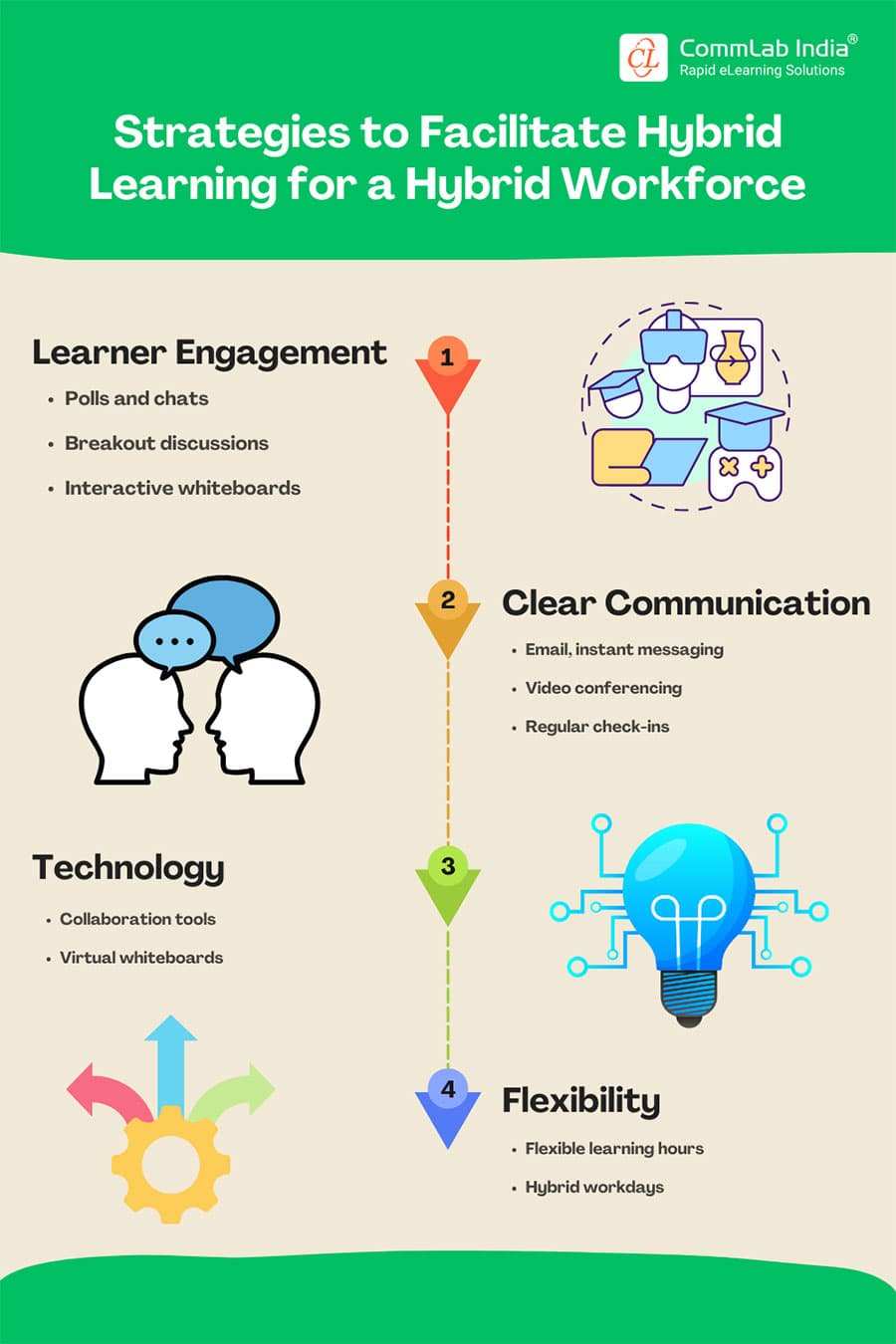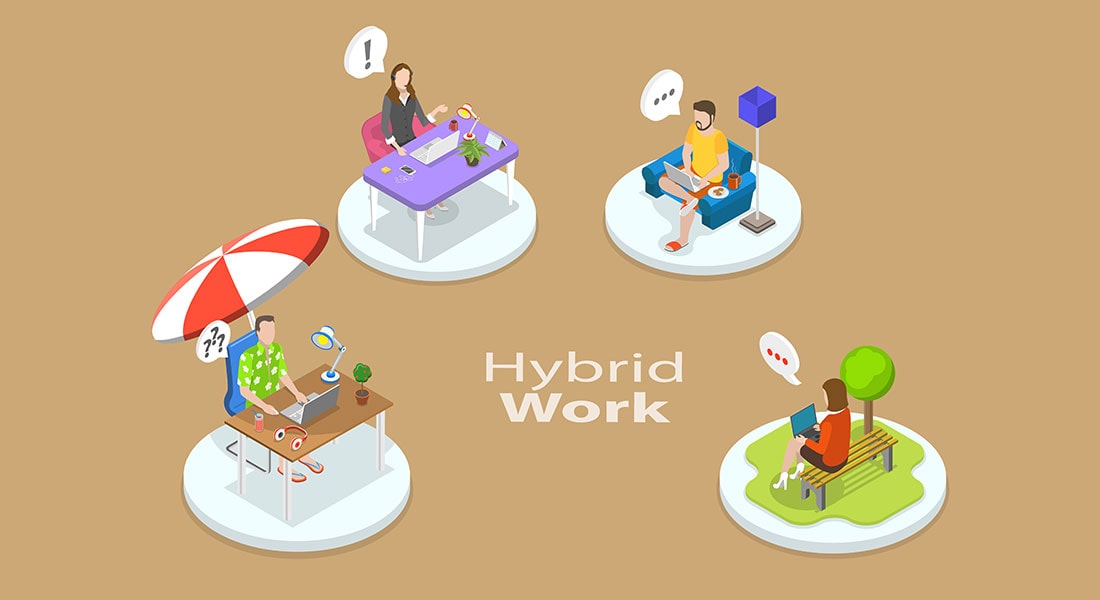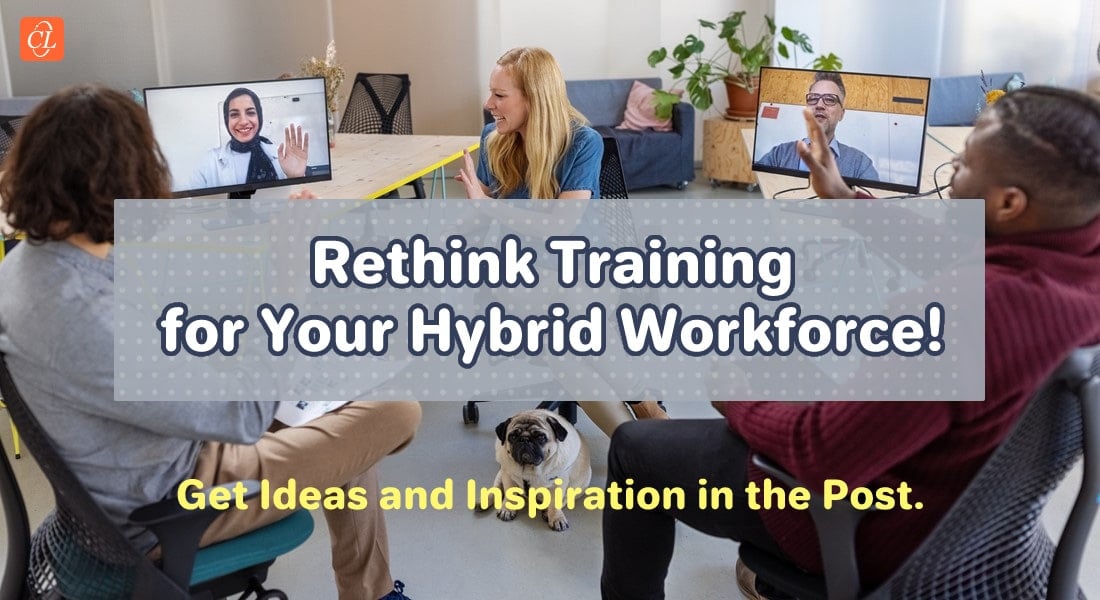4 Next-Level Hybrid Learning Strategies for Today's Hybrid Workforce [Infographic]
Implementing effective strategies to facilitate hybrid learning ensures that organizations maximize learning outcomes and empower their hybrid workforce.

In the dynamic landscape of corporate learning, evolution is the name of the game. As organizations adapt to the ever-changing needs of their workforce and the demands of a digital age, traditional training approaches are undergoing a profound transformation with the advent of hybrid learning ever since the COVID-19 pandemic hit. With hybrid learning, organizations are not only meeting the diverse needs of their employees but also unlocking new possibilities for engagement, flexibility, and effectiveness in training initiatives.
How Hybrid Learning Appeals Hybrid Workforce
Hybrid learning in corporate training presents a compelling solution for organizations navigating the complexities of a hybrid workforce. By blending traditional classroom-style instruction with digital tools and virtual learning platforms, hybrid learning offers the flexibility and accessibility necessary to accommodate the diverse needs of modern employees.
Furthermore, the appeal of hybrid learning lies in its ability to foster a culture of continuous learning and skill development within the workforce. By offering a diverse range of training formats and delivery methods, organizations can empower employees to take ownership of their learning journey and pursue professional development opportunities that align with their individual goals and preferences. With hybrid learning, employees have the flexibility to access training resources at their convenience, enabling them to balance their work responsibilities with ongoing learning initiatives and stay relevant in an ever-evolving business landscape.
→ Download Now: Are You Ready for Online Training? [Checklist]
What Should Be the Vision for a Hybrid Learning Plan for a Hybrid Workforce?
- Create a learning plan that accommodates both remote and in-person work setups, allowing employees to access training regardless of their location.
- Combine real-time sessions with self-paced modules to cater to the diverse learning preferences and schedules of a hybrid workforce.
- Incorporate virtual collaboration tools and platforms to facilitate interaction and teamwork among remote and on-site employees during training sessions.
- Design learning materials and platforms that are accessible to all employees, including those with disabilities or limited internet connectivity.
- Utilize interactive elements, gamification, microlearning modules, and multimedia content to keep learners engaged and motivated throughout the training process.
- Offer ongoing support and resources to help employees navigate the challenges of hybrid learning environments effectively.
How to Facilitate Hybrid Learning for a Hybrid Workforce?
To Wrap up!
As we gaze into the future of corporate learning, one thing is clear- hybrid learning is here to stay, driving innovation, engagement, and success in the modern workplace. Are you ready to take your training strategy to the next level? Discover the key components and secret tips to craft a failproof training strategy tailored for the hybrid learning era. Dive into our comprehensive checklist and unlock the potential of online training programs for your organization's success.




![Online Training — How to Develop Effective Programs [Checklist]](https://no-cache.hubspot.com/cta/default/59327/ae131a0f-e51b-4928-8e55-88f70c46a14e.png)


